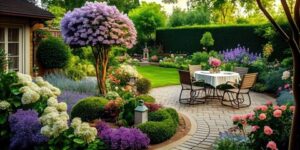A hot tub is a fantastic way to relax in the backyard, but even high-quality spas face issues from time to time. Fortunately, many problems are easy to diagnose and repair with the right tools.

For instance, a light surface scratch might seem minor, but left untreated the crack could grow into something far more serious. Similarly, leaks can range in severity from mild drips to major structural damage. Contact Spa Repair Phoenix for professional help.
Whether you use your hot tub for relaxation or exercise, it’s important to have a good water circulation system in place. This keeps the temperature stable and helps ensure a proper sanitization process. It also helps prevent stagnation and the build-up of organic matter and chemicals in the water.
The filtration system in your spa works to remove debris and impurities from the water, but it doesn’t get rid of everything. Some chemicals, such as chlorine, are difficult for the filtration system to break down. These can build up in the water and cause unpleasant odors. Leaving the water pump running for the recommended amount of time helps prevent these problems by circulating the water and ensuring that it goes through the filtration system multiple times.
Another benefit of a properly working circulation system is that it can help the water heat up faster. When the water pump is running, it will move the heat from the heater throughout the entire water body, preventing the hot spots and cool patches that occur when the water isn’t being circulated adequately.
If you notice a foul odor coming from your spa, it could be a sign that your water isn’t circulating correctly. This may be caused by a number of things, including organic matter building up in the pipes or a clogged filter. If this is the case, you should have your filters and drains cleaned out by a professional.
Another issue that can lead to poor water circulation is a blocked flow of the pump itself. This can be a result of a broken impeller or seal, and it’s best to leave this type of repair to an experienced technician.
Odd Noises
When a spa is in good working condition, it should make gentle and pleasant noises. However, any strange or loud sounds can indicate that your hot tub has a problem and requires professional repair services.
One of the most common odd sounds from a spa is a growling or rumbling sound. This means that your pump is struggling to circulate water and needs repairs. The most likely cause of this is a clog in your pump or another problem that requires the help of a professional.
Grinding or squeaking sounds are another common sign of problems in your swim spa. These noises are usually caused by the bearings in your circulation pump, which require professional attention. These noises are a clear indication that you need to get your spa fixed as soon as possible before the damage worsens.
A banging or clicking sound can also be a sign that something is wrong with your spa or sauna. This can be an indication of a faulty wiring connection that needs to be repaired immediately.
It’s also possible that your spa/sauna is leaking. This is a very serious issue that should be addressed immediately to avoid any expensive damages to your foundation or deck. A professional electrician should be called in to inspect your sauna and repair any electrical issues.
There are a few other common signs that your spa is in need of repair. If you have to turn your heater up high to keep it warm, this could be a sign that the element is dying. You may also notice that your hot tub isn’t heating as quickly as it used to.
While it’s normal for spas to make some noise, any new or strange sounds can be a sign that there is a problem with the pump or other equipment. By being vigilant and following these tips, you can minimize the amount of noise your spa or swim spa makes and extend its lifespan. For any additional questions, feel free to contact us! We would be happy to help.
Green or Dark Water
If your hot tub water is green or dark it is a sign that something is off. Whether it is an algae bloom or chemical imbalance the water needs to be treated before the problem worsens. Green water usually means that the sanitiser levels are low. It is a common problem and can be easily fixed with chlorine shock treatment or bromine. Using the correct dosage as directed on the product should reduce the colour within 12 hours. Make sure you remove all pillows, headrests and your spa cover before adding the shock. Always keep the area well ventilated when shocking as the chemicals can be harmful if inhaled.
A darker water can also mean that the copper levels are too high. This can be caused by the chemicals used to treat the water, copper algaecide or even by using a garden hose that carries metals from your home’s plumbing. The best way to prevent this is to test the water’s total alkalinity and pH weekly and maintain a consistent balance of chemicals.
The other reason that your spa might turn green is due to an algae bloom. The warm water provides the perfect breeding ground for algae to grow, especially if it isn’t being sanitised properly. To prevent this, you should use a chlorine sanitiser and a shock treatment regularly, ideally as part of your regular maintenance routine.
Keeping your spa water clean and clear is essential to enjoying it. If you have any questions about the condition of your hot tub, don’t hesitate to contact us and we’ll be happy to help.
Having crystal clear spa water is important not only because it looks more inviting, but it also indicates that your water is properly balanced and safe to enjoy. Discolored spa water can indicate several different issues that should be addressed as soon as possible, including insufficient sanitizer, low pH, high metal content or residue from beauty products such as fake tan. The good news is that most of these problems are easy to treat with the right chemicals and maintenance routine.
Cold Water
With a spa’s long lifespan and direct contact with water 24/7, issues are bound to happen. Knowing what to look out for can save you time and money in the long run by preventing costly repairs and keeping your spa in optimal condition. With a little maintenance knowledge, you can manage most spa problems without the need to call in a professional!
A noisy pump is often a sign of an issue. Whether it’s low growling or high-pitched squeaking, these noises usually indicate that something is wrong with your pump and may require a repair or replacement part. If you notice your pump making strange noises, it’s recommended that you check the filter and intake valves for blockages and clogs. You should also test your water levels and rebalance your chemicals if necessary.
Seeing an error code on your spa’s control panel can be intimidating, but you shouldn’t let it discourage you. Most errors are simply an indication that the spa needs to be refilled with fresh water or that there is a problem with your filters or equipment. Refer to your user’s manual for detailed instructions on how to fix these issues.
Another common issue is murky water, which is usually a sign that your water’s chemistry has been out of balance. Testing your water and following the treatment instructions on your chemical product should help you rebalance the water and restore it to its healthy state.
A final common issue is smelly water, which usually occurs when your treatment products release gas and reenter your hot tub through the cover. This can cause your sanitizer levels to rise and, if left untreated, lead to unpleasant smells in your spa. Using an algaecide will often resolve this issue, but if it persists, a full professional cleaning will be needed to get rid of the odor.
A well-rounded hot tub maintenance routine is the best way to protect your investment and prevent these common problems from occurring. If you have any questions about your maintenance routine or are experiencing a spa issue, contact your local Hot Spring dealer for expert troubleshooting and official parts and service.



